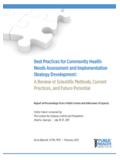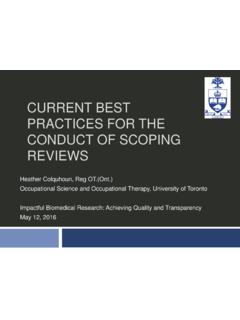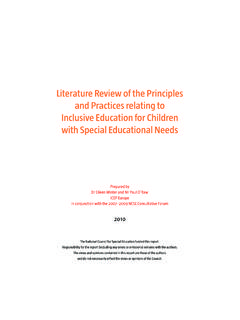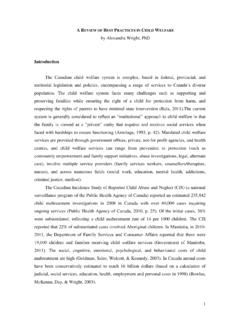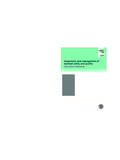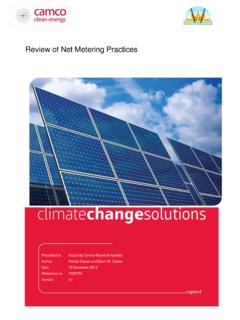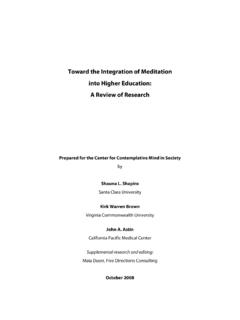Transcription of Review of Work at Height Practices in the UK …
1 Review of Work at Height Practices in the UK. broadcasting industry A Report from NEL for Health & Safety Executive NEL Project No: RSU422. Report No: 2006/201. Issue 2. Date: November 2006. NEL. TUV NEL Ltd East Kilbride Glasgow G75 0QU. Tel: 01355 220222. Fax No: 01355 272999. Email: Review of Work at Height Practices in the UK broadcasting industry A Report from NEL for Health & Safety Executive Field Operations Directorate CACTUS. 8th Floor Pegasus House Glasgow G2 4LW. Prepared by: L Hunter .. Approved by: Dr J Bingham .. For Michael Valente Managing Director Date: November 2006.
2 NEL Project No: RSU422 Page 2 of 62. Report No: 2006/201. NEL. EXECUTIVE SUMMARY. Over a ten month period from September 2005, NEL was contracted by HSE to undertake a Review of work at Height within the UK broadcasting industry . The work Practices of the industry were assessed against the Work at Height Regulations, which have been introduced in the UK in order to reduce the number of accidents and deaths caused by falls from Height . These remain the single largest cause of fatalities in the workplace. Surveys conducted at three outdoor events and two indoor events revealed a large variation in fall protection levels.
3 Although examples of good practice were observed, many instances of bad practice were evident, where workers were inadequately protected from potential injury or death when working at Height . Although there was evidence that efforts had been made to avoid work at Height by implementing alternative methods and introducing equipment, the Review highlighted weaknesses in the management and control of work at Height . In particular there was a failure to ensure workers were adequately trained and competent and that PPE in use was adequate and compliant with current legislation.
4 Amongst the most common issues encountered during the Review was the use of work positioning PPE for fall arrest applications and the widespread use of unapproved PPE, including lanyards and lifelines. A fall protection PPE should be CE. marked for the intended purpose under PPE Directive 89/686/EC. Other issues included the absence of fall protection for worker safety and the lack of rescue plans to ensure the safe and timely recovery of persons suspended after a fall. In general, improvements are necessary in order to achieve compliance with the Work at Height Regulations.
5 This report provides guidance and makes a number of recommendations aimed at improving the management and safety of workers at Height . NEL Project No: RSU422 Page 3 of 62. Report No: 2006/201. NEL. CONTENTS. Page EXECUTIVE SUMMARY. 1 INTRODUCTION .. 5. 2 PURPOSE .. 5. 3 APPROACH .. 5. 4 TERMS AND 6. 5 SURVEY FINDINGS AND 7. 7. Survey 7. Inadequate Fall 10. No Protection Against Falls .. 11. No Protection During Access and Egress .. 12. No Fall Arrest Backup During Work Positioning .. 12. Unapproved 15. Incorrect Selection of 18. Misuse of PPE.
6 23. Poor Condition of 34. Poor Selection of Structural Anchor Points and Poor Installation of PPE 35. Unprotected Fragile 39. Marquees and General 39. Inadequate Rescue Plans .. 42. MEWPS .. 42. Ladders and Mobile Scaffold Towers .. 42. Mobile 43. Environmental and General 44. 6 CONCLUSIONS .. 45. 7 RECOMMENDATIONS .. 46. Risk Assessment .. 46. Access, Egress and Places of 47. Danger Areas .. 49. Selection of Work Equipment .. 49. Assessment of 49. Training and Competence of Personnel .. 50. Inspection of Workplace and Conditions .. 50.
7 Inspection of Work Equipment Before 50. Management 50. Personal Protective Equipment (PPE).. 51. ACKNOWLEDGEMENTS. REFERENCES. LIST OF FIGURES. APPENDIX 1 Examples of good practice observed during the survey APPENDIX 2 Guidance on Procurement and Selection of PPE. APPENDIX 3 Working at Heights Risk Assessment Process APPENDIX 4 Work at Height Training Information NEL Project No: RSU422 Page 4 of 62. Report No: 2006/201. NEL. 1 INTRODUCTION. This report presents the findings of surveys conducted between September 2005 and April 2006 by NEL for HSE to assess working at Height activities within the UK.
8 broadcasting industry . The findings detailed in this report collate and summarise the conclusions from five separate broadcasting visit reports1,2,3,4,5 submitted to HSE. For confidentiality reasons, all photographs contained within this report have been made anonymous. 2 PURPOSE. The purpose of the survey was to assess practice in the industry against the Work at Height Regulations6 (WAHR), which were introduced in the UK during 2005. For the first time the WAHR covers all industries with a single set of regulations. Specific objectives of the project were to: Identify working at Height activities Evaluate risks and control measures Document, report and present findings Provide recommendations and guidance 3 APPROACH.
9 The project involved a survey of three outdoor and two indoor broadcasting events to provide representative samples of working at Height activities during the assembly and dismantling of typical temporary structures for entertainment events. The Review covers all work activities at Height where there is a need to prevent or control the risk of a worker falling a distance liable to cause personal injury. All observations made during the survey were captured on film using a digital video recorder and still camera for information and analysis purposes.
10 All images obtained during the survey have been given to HSE. Due to the nature of the survey, the presence of NEL and HSE staff may have influenced the behaviour of workers, with the result that the procedures observed during the visits may have differed from those normally used. Workers and management representatives were consulted at times during the survey to provide necessary information. Therefore, many of the findings from this survey rely on the accuracy of information supplied. In assessing the methods used to protect against falls from Height , consideration has also been given to provisions for rescue and evacuation in emergency situations, where the timely and safe recovery of falls victims is essential to prevent further discomfort, injury or even death.










